 February 8, 2018 John E. Ross, KD8IDJ, Editor
| ||||||
3Y0Z Bouvet Island DXpedition Aborted over Safety Concerns The 3Y0Z Bouvet Island DXpedition website still invites visitors to "Follow Our Story Here." But that story took a disappointing turn on February 3, when the long-anticipated and costly DXpedition was abruptly aborted -- even as the Betanzos, the vessel that had transported the DXpedition team from Chile, sat at anchor in full view of the remote South Atlantic island where they'd hoped to operate. The DXpedition team had arrived just a couple of days earlier and was awaiting the opportunity to transport the team and equipment to the island by helicopter.
On February 5, the team co-leaders -- Bob Allphin, K4UEE; Ralph Fedor, K0IR, and Erling Wiig, LA6VM -- announced a change in itinerary, saying, "Our captain has decided that it is in the best interest of safety and expediency to proceed directly to Capetown, South Africa, rather than Punta Arenas, Chile. We are now heading north to avoid the possibility of encountering ice." Most of the team members were reported "resting in their bunks and in good spirits."
A little later that same day, Fedor reported that the Betanzos had passed through some ice but that the seas then cleared. He said the voyage was "considerably smoother" than earlier in the day. "We are, of course, very, very disappointed," Fedor said. "We are slowed, but safe." The cost of the 3Y0Z DXpedition approached $750,000, about half of that coming from the 20 team members -- top operators from several nations, with considerable DXpedition experience. In the planning stages for 2 years, the DXpedition had attracted contributions large and small from clubs and individuals around the world -- including $100,000 from the Northern California DX Foundation -- its largest grant ever -- as well as an ARRL Colvin Award and a Yasme Foundation grant. A dependency of Norway, Bouvet is the third most-wanted DXCC entity. The last Bouvet activation was 3Y0E, over the winter of 2007-2008. ARRL Suggests FCC May Need to Intervene to Ensure Effective Antenna Rights Commenting in response to an FCC Public Notice (DA 17-1180) released last month, ARRL addressed the extent of Amateur Radio's response to recent hurricane disasters and efforts needed to expand the use of Amateur Radio services when it comes to planning, testing, and providing emergency communication. Amateur Radio not only has been "far more than a hobby;" it is a ubiquitous, infrastructure-independent communication resource that's always ready to deploy effectively whenever and wherever needed, the comments assert. ARRL raised three areas where action by the FCC could ensure and enhance the ability of radio amateurs to provide emergency communication, including the current Amateur Radio Parity Act of 2017 (S. 1534), now in the US Senate.
"The bill is currently before the Senate Commerce Committee. If, however, Congress is unable, as has been rumored, to pass any telecommunications legislation this term, it will be incumbent on the Commission to take the action on its own initiative that would be called for by this legislation. The future of Amateur Radio emergency communications is dependent on it." ARRL asserted that it "is critical to have stations located at one's residence in order to regularly participate in disaster preparedness training exercises and drills." Symbol Rate Petition Another "noteworthy and urgent need" that might call for some regulatory involvement by the FCC, ARRL said, "relates to an outdated regulation that limits data rates in HF amateur communications, precluding certain digital emissions that have recently proven extremely important in Amateur Radio hurricane relief efforts." ARRL noted that the FCC has yet to act on the League's Petition for Rule Making (RM-11708), filed in November of 2013, proposing to amend the Amateur Service rules to eliminate the symbol rate limit relative to data emissions in allocations below 29.7 MHz. That Petition also called for establishing a 2.8 kHz maximum occupied bandwidth for data emissions in those bands. ARRL has argued that this deregulatory action is necessary to allow the use of PACTOR 4, a digital mode valuable in disaster-relief efforts. In July 2016, the Commission released a Notice of Proposed Rule Making in WT Docket 16-239, proposing only to remove limitations on the symbol rate applicable to data emissions. "Equipment dispatched with the 'Force of 50' [volunteers] to Puerto Rico included data transmission equipment capable of PACTOR 4 operation, but it could not be legally used in the Hurricane Maria disaster relief effort," ARRL noted. The League prevailed upon the FCC to grant a temporary waiver to permit use of PACTOR 4. "However, it should not have been necessary to wait more than 4 years for the underlying rulemaking proceeding to have been resolved, and it should not have been necessary to ask for a temporary waiver of a hopelessly outdated rule that limits data speeds for no useful reason," ARRL added. 5 MHz Band Petition The League also called on the FCC to "take the action requested in ARRL's January 2017 Petition for Rule Making (RM-11785), proposing to allocate the band 5351.5 to 5366.5 kHz to the Amateur Radio Service on a secondary basis. Read more. The Doctor Will See You Now! "Automatic Gain Control" is the topic of the latest (February 1) episode of the "ARRL The Doctor is In" podcast. Listen...and learn!
Every 2 weeks, your host, QST Editor-in-Chief Steve Ford, WB8IMY, and the Doctor himself, Joel Hallas, W1ZR, will discuss a broad range of technical topics. You can also e-mail your questions to doctor@arrl.org, and the Doctor may answer them in a future podcast. Enjoy "ARRL The Doctor is In" on Apple iTunes, or by using your iPhone or iPad podcast app (just search for "ARRL The Doctor is In"). You can also listen online at Blubrry, or at Stitcher (free registration required, or browse the site as a guest) and through the free Stitcher app for iOS, Kindle, or Android devices. If you've never listened to a podcast before, download our beginner's guide. Foxes and Hounds -- FT8 DXpedition Mode is in the Works for WSJT-X Speaking on behalf of the WSJT-X Development Team, Joe Taylor, K1JT, has issued a progress report on the team's efforts to develop FT8 DXpedition Mode. The new digital mode will include new and innovative features, which are detailed in a draft FT8 DXpedition Mode User Guide, released on February 2. Taylor said the basic goal of FT8 DXpedition Mode is to enable DXpeditions to make FT8 contacts at the highest possible rates, and the WSJT-X Development Team has been working with members of the Baker Island KH1/KH7Z DXpedition team, ahead of its mid-summer operation, to work out the wrinkles.
In FT8 DXpedition Mode, a DXpedition stations is the "Fox," and calling stations are "Hounds." The new mode permits contacts to be completed with as little as one Fox transmission per contact. The Fox also can transmit up to five signals simultaneously, upping the potential contact rate to 600/hour. "With expected signal levels and likely levels of QRM, sustained rates of several hundred QSOs/hour are expected to be possible," the User Guide asserts. The User Guide points out that FT8 DXpedition Mode is suitable for use only by legitimate DXpedition stations and by those attempting to contact them and should not be used for day-to-day FT8 operation. "Another test run [of the new mode] will probably be scheduled in a month or so," Taylor continued, adding that others subsequently will be invited to upgrade to a "release candidate" called WSJT-X v1.9.0-rc1, "and to join in trying to work one or more specific 'pseudo-DXpedition' stations at a certain time and frequency." WSJT-X release candidate versions, identified by an -rcx suffix, are offered temporarily for beta-testing but are not suitable for long-term general use. Taylor said he hopes the development team's approach to FT8 DXpedition Mode will continue the process of "shaking bugs out of the program" and generally improve its usability for DXpedition operators and DXers alike. -- Thanks to Joe Taylor, K1JT ARRL Foundation Announces Joel R. Miller (W7PDX) and Martha C. Miller STEM Scholarship The ARRL Foundation has announced a new scholarship, the Joel R. Miller (W7PDX) and Martha C. Miller STEM Scholarship. Endowed through the generosity of Joel R. Miller, W7PDX, and Martha C. Miller, this scholarship is intended to supplement the educational expenses of an Amateur Radio operator pursuing higher education. The ARRL Foundation will administer the scholarship, which is $1,000 annually to fund the costs of tuition, books, fees, and other educational expenses. The first scholarship from this endowment will be awarded in 2019.
The ARRL Foundation Scholarship Committee will submit its nomination to the ARRL Foundation Board of Directors to approve by majority vote. The Board will disburse the scholarship funds to the winner's school of choice. The Joel R. Miller (W7PDX) and Martha C. Miller STEM Scholarship will be endowed with a gift of $25,000. Earnings on the endowment will fund the annual scholarship award. Z60A Fielding Three Stations to Handle Huge Pileups for New DXCC #1 The special Z60A activation to mark the addition of the Republic of Kosovo to the DXCC List has topped 50,000 contacts and counting. Pileups continue to be heavy. Z60A is operating split and is not listening on its transmit frequency! Pay attention to operators' instructions! Z60A has said it will operate in this weekend's CQ WPX RTTY contest, while next weekend would showcase the most active locals, including Z61DX, Z61VB, Z62FB, and Z63DBB.
The Z60A activation will culminate on Kosovo's 10th anniversary of independence, Sunday, February 18, the weekend of the ARRL International DX Contest (CW), and some "sporadic" Z60A activity is anticipated during the contest. Visiting operators will team up with locals to wrap up the project and salute the ARRL and the US contesting community, as credit for working Z6 now is accepted for ARRL awards. Manmade noise in the capital city of Pristina has been problematic. Plans call for using donated equipment to set up a "clean receiving site" outside of Pristina. The European DX Foundation (EUDXF) has made a cash donation to Kosovo's IARU member society, SHRAK, and the Yasme Foundation has presented a series of ARRL publications to the SHRAK Headquarters library at the Technical University of Pristina. Others wishing to donate to support Amateur Radio in Kosovo should contact Wayne Mills, N7NG. The complete Z60A log will be uploaded approximately 4 weeks after the current activation, which will end immediately following Kosovo's 10th independence anniversary celebration on February, 18. -- Thanks to Wayne Mills, N7NG, and Martti Laine, OH2BH Dominica Post-Disaster Needs Assessment Cites Amateur Radio's Role after Maria A post-hurricane disaster needs assessment published this past fall by the Government of Dominica points up the significance of Amateur Radio's role in the relief and recovery effort on the tiny Caribbean island nation in the wake of Hurricane Maria last September. It also calls for expanding the pool of radio amateurs on the island who could help in future disasters.
The Post-Disaster Needs Assessment concluded that Hurricane Maria caused nearly $931 million in damage, plus losses of more than $380 million -- which, according to the report, amounts to 226% of Dominica's 2016 gross domestic product (GDP). "The interruption of telecommunication services had a significant negative human impact as Dominica was almost cut off from the outside world for 3 days. Communities within Dominica were isolated from one another," said the report, which was published last November 15. The needs assessment said that "a sparse Amateur Radio network" suffering from a lack of trained operators and back-up power, plus "a few satellite phones" delivered information "required for critical relief and rescue activities." "The Government should rehabilitate the ECN (Emergency Communications Network) by offering training to persons interested in becoming Amateur Radio operators nationwide, with the goal of having a licensed Amateur Radio operator in every community with an emergency shelter," the report recommended.
The report also proposed that emergency shelters and the EOC be equipped with Amateur Radio and/or a satellite phone, "so that contact may be quickly established during or after a storm." The report also recommended that the government of Dominica "develop a plan for the operation and maintenance of the network long term, including replacement of equipment, training of operators and activation procedures for the network in case of an emergency." In the short term, the Post-Disaster Needs Assessment advised, rehabilitation of the existing National Emergency Communications Network should include the purchase of Amateur Radio equipment, including repeaters, as well as satellite phones and "other technology required for the network." The Yasme Foundation, Yaesu USA, the Foundation for Amateur International Radio Service (FAIRS), and individual GoFundMe donors joined forces last fall to restore country-wide Amateur Radio communication on Dominica in the aftermath of Hurricane Maria. Private pilots Brian Machesney, K1LI, and Dave Bridgham, N1AHF, transported a planeload of Amateur Radio gear, relief equipment, and supplies as part of an effort to better prepare the small Caribbean island nation for future disasters. -- Thanks to Brian Machesney, K1LI USA ARDF Championships Set for June 13-17 in California The 18th USA Championships of Amateur Radio Direction Finding (ARDF) will take place June 13-17 near Truckee, California, some 30 miles southwest of Reno, Nevada. The competition sites are at about 6,300 feet elevation near Donner Summit. An optional training day will be held on Wednesday, June 13. Thursday will be devoted to foxoring, a combination of radio direction finding and classic orienteering. Friday morning will be the sprint event, followed by a model event for equipment testing and a competitor briefing.
These sites have not been used for any ARDF competitions in the past. Course designer is Bob Cooley, KF6VSE, and Meet Director is Jay Hennigan, WB6RDV. Both have been medalists in past USA ARDF Championships. The Event Information Page includes technical details, lodging information, site embargoes, tourism, weather and much more. Information about the sport of ARDF, including equipment and techniques. Registration will open soon. More details as they become available will be posted on the Homing In website of ARRL ARDF Coordinator Joe Moell, K0OV. Training Days in February Nine days of ARDF training sessions will take place beginning on February 17 in the Raleigh, North Carolina, area, with former Ukrainian ARDF team member Illia Ivanko as the primary instructor. Now living in the US, she was a medal winner at the 2017 IARU Region 2 ARDF Championships with the best five times in both classic events. The training sessions will be held in the Research Triangle area near Raleigh-Durham Airport. The Backwoods Orienteering Klub is sponsoring the event. Contact event organizer Joseph Huberman, K5JGH for more information. -- Thanks to ARRL ARDF Coordinator Joe Moell, K0OV In Brief
The K7RA Solar Update Tad Cook, K7RA, Seattle, reports: Solar activity increased in the first week of February, compared to the previous 7 days. February 1 and 3 saw no sunspots. A new sunspot region emerged on February 2, but it had disappeared by the next day. Another sunspot region appeared on February 4, and its area on February 4-7 was 80, 130, 160, and 200 millionths of the solar hemisphere. We haven't seen as much coverage since last October 7.
The heightened activity should continue over the next week. Predicted solar flux is 78 on February 8; 77 on February 9-10; 76 on February 11-12; 75 on February 13-15; 71 on February 16; 70 on February 17-22; 69 on February 23-28; 70 and 71 on March 1-2; 72 on March 3-14; 71 on March 15; 70 on March 16-21, and 69 on March 22-24. Predicted planetary A index is 8, 10, and 8 on February 8-10; 5 on February 11-14; 8, 12, 8, 10, 5, 8, 10, and 8 on February 15-22; 5 on February 23-March 13; 8, 12, 8, 10, 5, 8, 10, and 8 on March 14-21, and 5 on March 22-24. Sunspot numbers for February 1-7, 2018 were 0, 11, 0, 11, 13, 17, and 20, with a mean of 3.7. The 10.7-centimeter flux was 69, 68.8, 69.2, 73, 74, 76.9, and 76.6, with a mean of 69.1. Estimated planetary A indices were 4, 4, 3, 3, 8, 5, and 4, with a mean of 6.3. Estimated mid-latitude A indices were 2, 3, 2, 3, 8, 4, and 3, with a mean of 4.9. Send me your reports and observations. Just Ahead in Radiosport
See the ARRL Contest Calendar for more information. For in-depth reporting on Amateur Radio contesting, subscribe to The ARRL Contest Update via your ARRL member profile e-mail preferences. Upcoming ARRL Section, State, and Division Conventions
Find conventions and hamfests in your area.
. .
Subscribe to...
Free of charge to ARRL members...
Find ARRL on Facebook! Follow us on Twitter, Snapchat @ARRLHQ, and Instagram! | ||||||
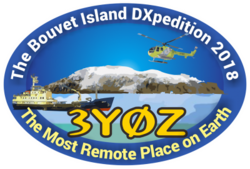 "During the last 72 hours, we continued to experience the high winds, low clouds, fog, and rough seas that have prevented helicopter operations since our arrival at Bouvet," a February 3 announcement on the DXpedition's website said. "No improvement was predicted in the weather forecast for the next 4 days. Then, last night, an issue developed in one of the ship's engines. This morning, the captain of the vessel declared it unsafe to continue with our project and aborted the DXpedition. We are now on our long voyage back to Punta Arenas [Chile]. As you might imagine, the team is deeply disappointed, but safe. There is already talk about rescheduling the DXpedition."
"During the last 72 hours, we continued to experience the high winds, low clouds, fog, and rough seas that have prevented helicopter operations since our arrival at Bouvet," a February 3 announcement on the DXpedition's website said. "No improvement was predicted in the weather forecast for the next 4 days. Then, last night, an issue developed in one of the ship's engines. This morning, the captain of the vessel declared it unsafe to continue with our project and aborted the DXpedition. We are now on our long voyage back to Punta Arenas [Chile]. As you might imagine, the team is deeply disappointed, but safe. There is already talk about rescheduling the DXpedition."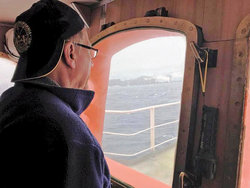
 "HOAs can preclude amateur antennas in common areas. HOAs can enact reasonable written rules governing height, location, size, and aesthetic impact of, and installation requirements for, outdoor antennas and support structures for amateur communications, but the effective outdoor antenna requirement is paramount," ARRL noted in its comments.
"HOAs can preclude amateur antennas in common areas. HOAs can enact reasonable written rules governing height, location, size, and aesthetic impact of, and installation requirements for, outdoor antennas and support structures for amateur communications, but the effective outdoor antenna requirement is paramount," ARRL noted in its comments. Sponsored by
Sponsored by .png) "Like most major DXpeditions, this one will almost certainly make a majority of its QSOs using SSB and CW," Taylor said. "However, the group is well aware of the rapid rise of FT8 popularity, and they plan to use FT8 as well. Making FT8 QSOs with KH1/KH7Z will require the DXpedition and everyone trying to work them to use a new, yet-to-be-released version of WSJT-X. We have tested the new program features on the air several times, and found them to work well."
"Like most major DXpeditions, this one will almost certainly make a majority of its QSOs using SSB and CW," Taylor said. "However, the group is well aware of the rapid rise of FT8 popularity, and they plan to use FT8 as well. Making FT8 QSOs with KH1/KH7Z will require the DXpedition and everyone trying to work them to use a new, yet-to-be-released version of WSJT-X. We have tested the new program features on the air several times, and found them to work well.".jpg) Applicants must be a US citizen, without regard to gender, race, national origin, or handicap status, residing in the ARRL Northwestern Division (Alaska, Idaho, Montana, Oregon, and Washington). Those applying must be pursuing an associate's or higher degree in the fields of science, technology, engineering, or mathematics (STEM) at an accredited institution of higher education and have a 3.0 or higher grade point average at a high school or an accredited institution of higher education for the academic year immediately prior to the application period.
Applicants must be a US citizen, without regard to gender, race, national origin, or handicap status, residing in the ARRL Northwestern Division (Alaska, Idaho, Montana, Oregon, and Washington). Those applying must be pursuing an associate's or higher degree in the fields of science, technology, engineering, or mathematics (STEM) at an accredited institution of higher education and have a 3.0 or higher grade point average at a high school or an accredited institution of higher education for the academic year immediately prior to the application period. 
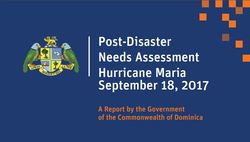 The report,
The report, 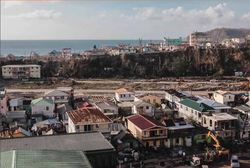
 Classic 2-meter and 80-meter competitions will take place Saturday and Sunday, respectively. There will be an awards banquet on Saturday evening for presentation of medals for foxoring, sprint, and 2-meter classic events. Awards for the 80-meter classic will be presented Sunday afternoon following the competition.
Classic 2-meter and 80-meter competitions will take place Saturday and Sunday, respectively. There will be an awards banquet on Saturday evening for presentation of medals for foxoring, sprint, and 2-meter classic events. Awards for the 80-meter classic will be presented Sunday afternoon following the competition.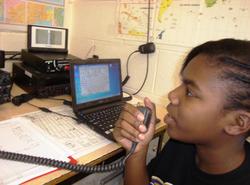 The Winter/Spring term of the twice-yearly School Club Roundup (
The Winter/Spring term of the twice-yearly School Club Roundup (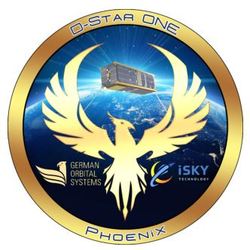 A Soyuz rocket launched
A Soyuz rocket launched  NOAA is once again considering ending North Atlantic and North Pacific Marine storm warning announcements on WWV and WWVH. These occur at minutes 8, 9, and 10 of each hour on WWV, and minutes 48, 49, 50, and 51 of WWVH.
NOAA is once again considering ending North Atlantic and North Pacific Marine storm warning announcements on WWV and WWVH. These occur at minutes 8, 9, and 10 of each hour on WWV, and minutes 48, 49, 50, and 51 of WWVH. 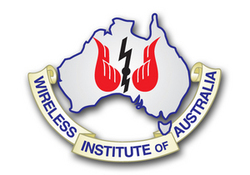 The Wireless Institute of Australia (
The Wireless Institute of Australia (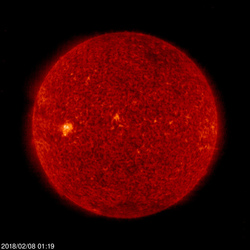 Last week the average daily sunspot number increased from 3.7 to 10.3, and average solar flux from 69.1 to 72.5. The average planetary A index decreased modestly from 6.3 to 4.4, while the average mid-latitude A index (measured at one location in Virginia) decreased from 4.9 to 3.6.
Last week the average daily sunspot number increased from 3.7 to 10.3, and average solar flux from 69.1 to 72.5. The average planetary A index decreased modestly from 6.3 to 4.4, while the average mid-latitude A index (measured at one location in Virginia) decreased from 4.9 to 3.6.







